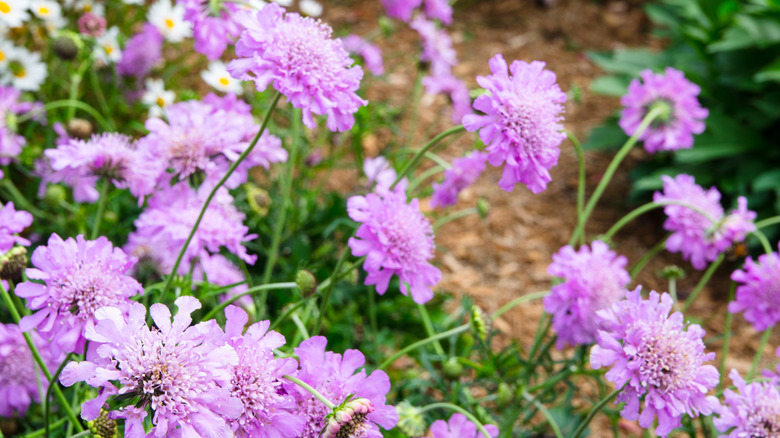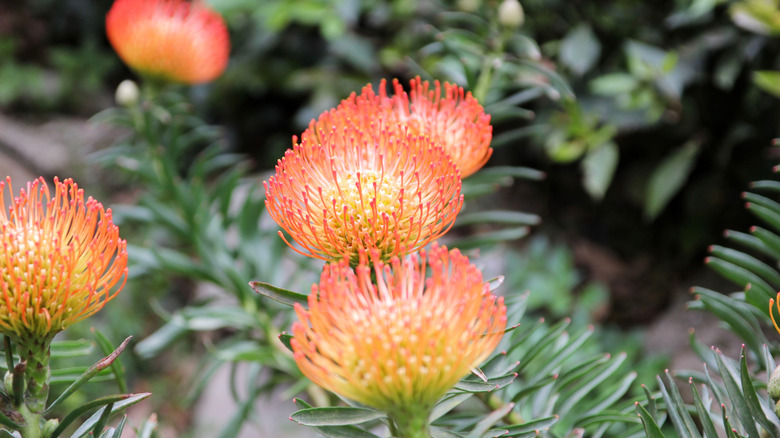The Fertilizer Trick To Increase Pincushion Flower Blooms
The pincushion flower (Scabiosa atropurpurea) is a delightful flowering plant native to Mediterranean countries. In some parts of the U.S. it's grown as an annual, but it can be treated as a perennial in warmer regions that experience relatively mild winters. However, it doesn't really like hot temperatures or high humidity. Generally, it can be grown in USDA hardiness zones 4 through 11. The plant has lovely lance-shaped leaves and the prettiest daisy-like flowers that really do look like a pincushion from afar. These attractive blooms can appear for quite a few months from spring right through to the fall. They are excellent for cut flowers and deadheading the spent flowers will encourage more blooms. To help increase flower production further, you might want to try a fertilizer trick such as feeding your plants with something that is slightly higher in potassium and phosphorus than nitrogen.
If you want to grow this attractive plant in your garden, there are plenty of cultivars and hybrids available with flower colors of purple, pink, yellow, red, white, and blue. For a spectacular pop of color in your garden, you might like to consider Scabiosa 'Dark Knight', which is one of numerous stunning new plants to add to your garden that you might not have heard of. Plant your pincushion flower in a sunny position in well-drained soil that is slightly alkaline. The flowers will add color to your garden and will also attract pollinators such as bees and hummingbirds.
Why fertilizing your pincushion flowers may help produce more blooms
As many gardeners know, all plants need a range of both macro and micronutrients for healthy growth. The three major macronutrients are nitrogen, phosphorus, and potassium. These help plants during various growth stages. While pincushion flowers are not considered heavy feeders, giving them a little extra boost might just encourage them to produce more blooms as they go through their growth cycle. While the nitrogen in fertilizers promotes lots of green leaf growth, both phosphorus and potassium are needed for flowering and healthy root growth. That's why higher ratios of these two nutrients may be recommended for certain blooming and fruiting plants.
To give your pincushion flowers ample nutrients, you can add some slow-release fertilizer when you plant them in your garden or when the new seedlings are around 2 to 4 inches tall. Then, once the plants start blooming, feed them with a liquid fertilizer formulated for flowering plants around once a month during their flowering stage. A liquid fertilizer is particularly useful because the nutrients are available to your plants immediately. Always follow the recommended dosages on the pack when fertilizing your flowers. Choosing the perfect flower fertilizer is not that difficult once you understand your plant's needs. You might even like to consider the tomato feed hack people use on potted flowers that might be beneficial for your pincushion flowers as well.

